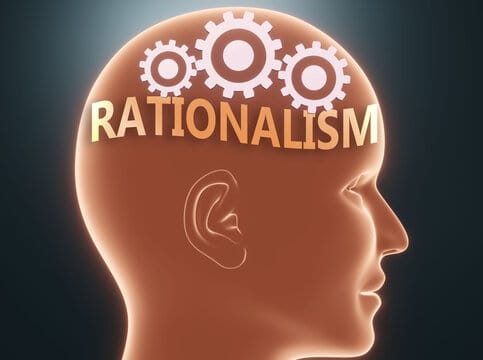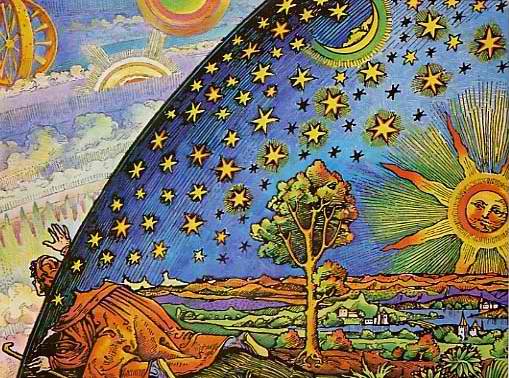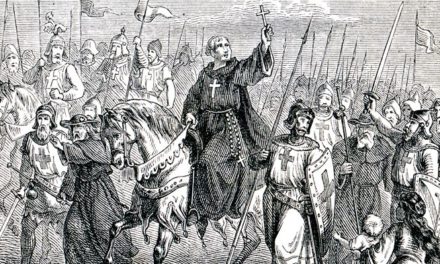This is Part 2 of The Rationalist Option on Communio Sanctorum, History of the Christian Church.
In our last episode, we took a look at the genesis of the Enlightenment in England and France. We’ll come back to France a bit later after taking a brief look at the Enlightenment in German and Russia.
Germany took a bit longer to join the Enlightenment. That was due in part to the condition of the land following the Thirty Years War. It’s estimated the population shrank from twenty million to just seven after it. There’s also the issue of Germany not really being a country. It was at that time a collection of independent statelets, united by language and culture, but divided between Catholics and Lutherans.
The low regard for contemporary culture at that time in Germany is illustrated by the fact that while Newton, Locke, and Voltaire were regarded as heroes in their realms, Germany’s equivalent, Gottfried von Leibniz, was never popular during his lifetime. Yet he was one of the most brilliant men, not just of his day, but of all time. Born in 1646 in Leipzig, Leibniz was the son of a professor of philosophy. He studied law before taking up with a disreputable group of alchemists and worked for the Elector of Mainz.
Leibniz came to the attention of the world in 1672, when he was sent on an unofficial ambassadorial mission to Paris. The purpose of this trip was to present Louis XIV with a plan he’d worked out for the invasion of Egypt, by which he hoped to distract the Sun King from ambitions he might have toward Germany. Nothing came of Leibniz’s diplomacy, although Napoleon seems to have adopted his strategy a century later. In any case, while in Paris, Leibniz took the opportunity to meet with all the luminaries in the foremost city of culture in Europe. He studied mathematics, quickly becoming one of the foremost mathematicians in the world, and made a number of important discoveries, including differential calculus, for which tens of thousands of students have hated him ever since. He also proudly demonstrated an extraordinary mechanical calculator he had built.
Leibniz’s interests were so wide-ranging he could never keep his mind on what he was doing. In 1676, he became Court Chancellor of Hanover and was put in charge of the library. But he was more interested in the mines at Harz and spent several years devising increasingly ingenious devices to solve the problem of draining them. He eventually worked for several German states, as well as the cities of Berlin and Vienna, for which he designed a number of civic improvements. In his spare time, he traveled extensively around Europe, meeting other rationalist luminaries, and carrying out his work in mathematics, chemistry, physics, metaphysics, and theology. He produced hardly any books of importance, but his vast correspondence, much of which is still in the process of being edited and published, dwarfed the output of most of his contemporaries; and there cannot have been any subject, however obscure, with which he did not deal, and on which he was not an authority. Leibniz died in 1716, an increasingly marginalized figure, defiantly wearing his long brocade coat and huge wig which had gone out of style decades before.
Despite Leibniz’s virtual single-handed attempt to kick-start the German Enlightenment, it didn’t get rolling until the 18th C. Prussia, the largest of the German states, took the lead, as its rulers sought to drag their country into the modern era. Frederick Wilhelm, who came to the throne in 1713, reformed the economy after staying with relatives in the Netherlands.
Wilhelm, a careful Lutheran, had no love for Catholic France, but his son, Frederick II, known as Frederick the Great, was a quite different person than his father. Upon his accession to the throne in 1740, he set about building on his father’s practical reforms with a program of cultural renovation. Among his first acts as ruler was to recall from exile Christian Wolff, the leading German philosopher, and Leibniz’s heir. Frederick II’s enthusiasm for French culture meant the usual coldness between the two realms saw a remarkable thaw. French was even spoken in his court, and it was at his invitation Voltaire moved to Prussia in 1749. Frederick was also keen to bolster the position of Prussia in Europe, which he did by engaging in a series of wars between the 1740s and 60s.
During the late 17th C, the Russian Czar Peter the Great traveled all over Europe on a mission to learn all he could about the Enlightenment. He was eager to see what impact it had had on the realms of culture, economics, and engineering. His plan was to return to Mother Russia and drag it, if need be, into the modern world.
Although Western Russia geographically is considered a part of Europe, it had for centuries been isolated. It was ruled by the Mongols for much of the late Middle Ages and was a bastion of Orthodox Christianity, a separate denomination from the Catholics and Protestants in the West. Westerners knew virtually nothing about Russian religion, and Russians cared virtually nothing for the West.
It’s hardly surprising that, when Peter returned home, he had to enforce his reforms with an iron hand if he was going to make headway. Beards, a revered symbol of Orthodoxy, were banned in an attempt to get people to look more Western. Young men were happy to comply, as many women preferred. But most older men kept their beards in boxes, fearing they were bereft of salvation without them. Traditional Russian dress, which reached the ankle, was banned. Everyone had to dress like the French, and anyone who refused had their clothes force-tailored. English hairstyles were mandatory for women. Schools were built, the calendar reformed, military conscription introduced, and church hierarchy was placed firmly under State control. Like Louis XIV’s France, Peter’s Russia was an avowedly Christian country. As a symbol of the new, Westward-leaning Russia, Peter transferred the capital to a new city, St Petersburg, on the Baltic coast.
But Peter was hardly a model of Enlightenment tolerance. In 1718, he had his son tortured to death for treason. Still, his reforms were extended and completed by Catherine the Great, a Prussian who became Empress of Russia in 1762. She organizing a coup against her own husband. Unlike Peter, Catherine grew up in Western Europe and had thoroughly imbibed Enlightenment principles. She corresponded with Voltaire and other leading cultural figures; patronized the arts, and founded the famous Hermitage Museum in St Petersburg. Catherine was also a skilled diplomat, and as the most powerful monarch in Europe, extended Russian influence throughout the continent.
Okay, so, you’re wondering how this is church history. I thought it wise to spend a little time charting the broad outlines of the Enlightenment so we could see how the thinking it produced affected theology.
That happens with the advent of Rationalism.
Rationalism reached its apex in the 18th and 19th Cs. It’s characterized by an interest in the physical world and its confidence in the powers of reason. In Western Europe, there’d been a growing interest in Nature since the 13th C. That was the era of Albert the Great and Thomas Aquinas, who reintroduced Aristotelian philosophy as a tool for doing theology. One of the points of contrast between Aristotelianism and the earlier Platonism that dominated theological thought was precisely that the new philosophy emphasized the importance of the senses and perception. The later Middle Ages, with its distrust of speculation, continued in the same vein. The art of the Renaissance, with its appreciation for the beauty of the human body and the world, was an expression of this interest. By the 17th C, many thought the goal of reason was understanding the world of nature.
Parallel to that, there appeared growing confidence in the powers of reason. Often, these two trends were combined in an effort to show the degree to which the order of nature coincides with the order of reason. This can be seen, for instance, in the work of Galileo, who was convinced the entire natural world was a system of mathematical relations, and that the ideal of knowledge was the reduction of all phenomena to their quantitative expression. Every success of such efforts seemed to confirm the most optimistic expectations of the power of reason.
This all led to the philosophy of René Descartes in the first half of the 17th C. His system was based on great confidence in mathematical reasoning, joined to a profound distrust of all that is not absolutely certain. He compared his philosophical method to geometry, a discipline that accepts only what is an undeniable axiom or has been rationally proven.
In applying his method, Descartes felt he ought to begin with an attitude of universal doubt, making sure that, once he found something he could not doubt, he would be certain of its truth. He then found that undeniable first truth in his own existence. He could doubt everything, but not that the doubting subject existed. “I think, therefore I am,” became the starting point for his philosophy. But this I whose existence cannot be doubted is only the subject as a thinker. The existence of his body wasn’t proven, so must be doubted.
Before proving his existence as a body, Descartes felt he could, get this >> Prove the existence of God. He found in his mind the idea of a “more perfect being,” and since his mind could not produce such an idea, which was above itself, it must have been placed there by God. Therefore, Descartes’s second conclusion was that God exists. It was only then, on the basis of the existence of God, and of trust in the divine perfection, that Descartes felt free to move on to prove the existence of the world and of his own body.
Descartes was a profoundly religious man who hoped his philosophy would be found useful by theologians. But not all agreed with him. Many theologians feared the challenge of Cartesianism—as his philosophy was called. The universal doubt Descartes proposed as his starting point seemed to some a kind of crass skepticism. The faculties of several universities declared Aristotelianism was the philosophical system best suited to Christian theology, and there were those who declared Cartesianism lead to heresy. Dismayed, Descartes decided to leave his native France. He moved to Sweden, where he lived the rest of his life.
But he was not without supporters. In France, those intellectual circles where Jansenism had been popular embraced Cartesianism. Eventually, others among the more orthodox also took it up, and debates continued for a long time.
The main point at which Cartesianism led to further theological and philosophical developments was the question of the relationship between spirit and matter, between soul and body. It’s at this point we could really get into a sticky wicket as we parse all the various ways theologians and philosophers offered ideas on the inter-relationship between the thinking self and the thing that occupies space in the form of a body. But we won’t go into the theories of Occasionalism, Monism, and Preestablished Harmony.
Let me just say this became a realm of contentious debate between a Dutch Jew named Baruch de Spinoza and our friend Leibniz.
While these philosophical developments took place on the Continent, in Britain, philosophy took a different route in what’s called Empiricism. It’s drawn from a Greek word meaning experience. Its leading figure was Oxford professor John Locke, we considered in the previous episode. In 1690, Locke published his Essay on Human Understanding. He read Descartes and agreed the order of the world corresponded to the order of the mind. But he didn’t believe there was such a thing as innate ideas to be discovered by looking inward. He contended that all knowledge is derived from experience; the experience of the senses, and the working of our minds. That meant the only genuine knowledge is based on three levels of experience: Experience of self, Experience of the world around us, and Experience of God, whose existence is manifest by the existence of ourselves and the world.
To this Locke added another level of knowledge, that of probability. Probability works like this; You and I have repeatedly experienced someone’s existence; let’s call him George. We know George. He’s a friend we see a couple of times a week. When George isn’t standing in front of us, we still have reason to believe He exists, even though at that moment, we have no purely empirical basis to believe in his existence. Still, sound judgment gives us reason to discern the probability of George’s existence. Locke said that this judgment of probability allows us to get on with the practical affairs in life.
Faith, Locke said, is assent to knowledge derived from revelation rather than reason. Therefore, although highly probable, knowledge derived by faith can’t be certain. Reason and judgment must be used in order to measure the degree of probability of what we believe by faith. For this reason, Locke opposed the “fanatical enthusiasm” of those who think that all they say is based on divine revelation. For the same reason, he defended religious toleration. Intolerance is born out of the muddled thinking that confuses the probable judgments of faith with the certainty of empirical reason. Besides, toleration is based on the very nature of society. The state does not have the authority to limit the freedom of its citizens in matters such as their personal religion.
In 1695, Locke published a treatise, The Reasonableness of Christianity, in which he claimed Christianity is the most reasonable of religions. He said the core of Christianity is the existence of God and faith in Christ as Messiah. But Locke didn’t believe the Christian Faith had added anything of importance to what could, in any case, have been known by the proper use of reason and judgment. In the final analysis, Christianity was little more than a very clear expression of truths and laws that others could have known by their natural faculties.
Others would come along later and drive a wedge between faith and reason, divorcing them into different camps. And in the settlement, Faith would be left impoverished while Reason drove off with all the goodies.
One of those who drove the wagon was David Hume in the mid-18th C. In my estimation, Hume can be blamed for the post-modern tendency of knee-jerk negativity toward absolutes. An illustration may best help to describe his philosophy, or better, his anti-philosophy. Hume was skeptical of reason, saying the only reason, reason seems to work is because of mental habits we’ve developed. In other words, In Hume’s system, Descartes’ doubt didn’t go far enough; he ought to have doubted his own ability to reason.
Hume maintained, for instance, that no one has ever experienced what we call cause and effect. We’ve seen, for instance, when a pool ball collides with another ball, there’s a noise and the second ball moves off in some direction. If we repeat that several times, we see similar results. So we conclude by the power of reason that the movement of the first ball caused the movement of the other. But, Hume contended, we’ve not seen any such thing. All we’ve witnessed is a series of phenomena, and our mind has linked them by means of the notion of cause and effect. This last step, Hume claimed, taken by any who see a series of phenomena that are seemingly related, has no basis in empirical observation. It is rather the result of our mental habits. So, by an empiricists’ definition, that’s not rational knowledge.
Hume’s uber-skepticism places such strict rules on interpreting what our senses tell us, there’s no room left for the working of logic and deduction. He cripples us and turns his followers into inveterate skeptics.
It wasn’t long until some Enlightenment thinkers washed their hands of faith altogether and began to envision a world without God or religion.
We’ll talk about later developments in Philosophy and their impact on theology in a later episode.






I would love a transcript of your podcasts, these are great!
Thanks Nicholas.
Look for the e-vite.
I didn’t get the e-vite, could you send it again? I accidentally missed a letter in the email address, sorry about that.
Nicholas,
Gmail says your site admin does not allow emails from outside the domain.
Do you have another email?
This is my alum school address, it should work.
Sent